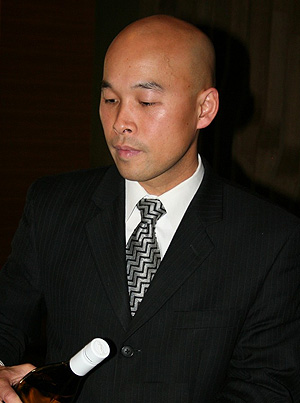

Have you seen any major shifts this year in terms of the prices that people are willing to spend on a bottle of wine?
It seems like $100-120 has been a really good sweet spot for the last two years. Before that, guests were pushing the upper limits of $150-$180. Sonoma Coast pinots have done really well, chardonnays have done really well. I’ve been bringing in less of the things I have to hand-sell, like a six pack of Chryseia instead of a case.
Have other shifts besides the economy had an impact on your wine program?
Diners are dictating what they want. It’s definitely part of social media and being able to look at iPhones at any point during dinner.
Those who are interested in wine have become more educated. In New York, people used to come in with their magazine or little cheat sheet of wines that had been recommended, and match it to our list. Now, more often than not, it’s a particular wine they want. They’re asking for Rombauer, they’re asking for Mondavi. And a lot of people are asking for Kosta Brown.
Honig Sauvignon Blanc was your top-selling wine, I believe for the second year in a row. Why does it work so well for you?
Wine is a brand, but wine also represents a family. [Former wine director] John-Paul Henaff started a relationship with Michael Honig, and I’ve been able to continue it. The Honigs have been very responsive to our needs. The wine is never late, it’s consistent, people know the name and people buy it. They get what they expect, so it’s not a wine that we need to actively sell. Plus, its placement on our by-the-glass list gives it a lot of exposure at our bar.
You seem to sell a lot of sparkling wine, and not just Champagne—the 2008 Schramsberg Blanc de Blancs was one of your top-selling wines.
After Champagne, that’s the best sparkling wine we have. People are maybe price-sensitive. Champagne starts out around $20-21 a glass, With Schramsberg, you’re getting a vintage wine, a blanc de blancs, for $17.
And how is Champagne doing?
Champagne sells well, especially in the lounge. We actually put a flyer out there listing all the grower Champagne offerings we have by the glass, like the Chartogne-Taillet Cuvée Ste. Anne, plus our half and full bottle selection. It talks about what they are, and how they are stylistically different. It’s a first intro to grower Champagne. You don’t even have to buy it by the glass, you can get a half-glass.
Two Napa cabernets made your top-ten list: 2003 Corison and 2008 Stags’ Leap Winery. Does cabernet remain a strong category?
It does—I definitely have to say so. As much as people are asking for chardonnay and pinot, people from out of town come in and are looking for Napa cabernet. Cathy Corison is one of those great success stories. Her being named the San Francisco Chronicle’s Winemaker of the Year definitely boosted sales. I’ve had to change the by-the-glass wine we were pouring because they were simply out of it. She’s been making good wines for a while now: low alcohol, very ageable wine that’s delicious by itself or with some of the courses we’re offering.
Chardonnays from Michel-Schlumberger and Peay both made your top-ten list, and the 2008 Flowers Sonoma Coast Chardonnay was also a big recent success for you. Is there a particular style of chardonnay that seems to be in vogue right now?
There are two camps: “I want oak,” or “I do not want oak.” I like the mineral-driven styles, and I actually like some of the bigger, flamboyant styles, too, with high acid and a lot of well-integrated oak—wines like Kongsgaard. When it’s done well, it’s beautiful.
If you were going to order one bottle of wine off your list for dinner—price not an issue—what would it be?
I just tasted this yesterday: the Cédric Bouchard Inflorescence. Hmm…is it haunting or mind boggling? It’s all pinot noir—a very deep wine, where you just sit there on your day off on the couch, riveted to it. It reminds me of the ocean: salty, savory. It took me a while to track down, and when I did get it, it gave me even more of an appreciation for the wine, because it was an effort to bring it in.
Longtime senior editor at Wine & Spirits magazine, Luke now works for the Stanford Technology Ventures Program.
This is a W&S web exclusive. Get access to all of our feature stories by signing up today.
















